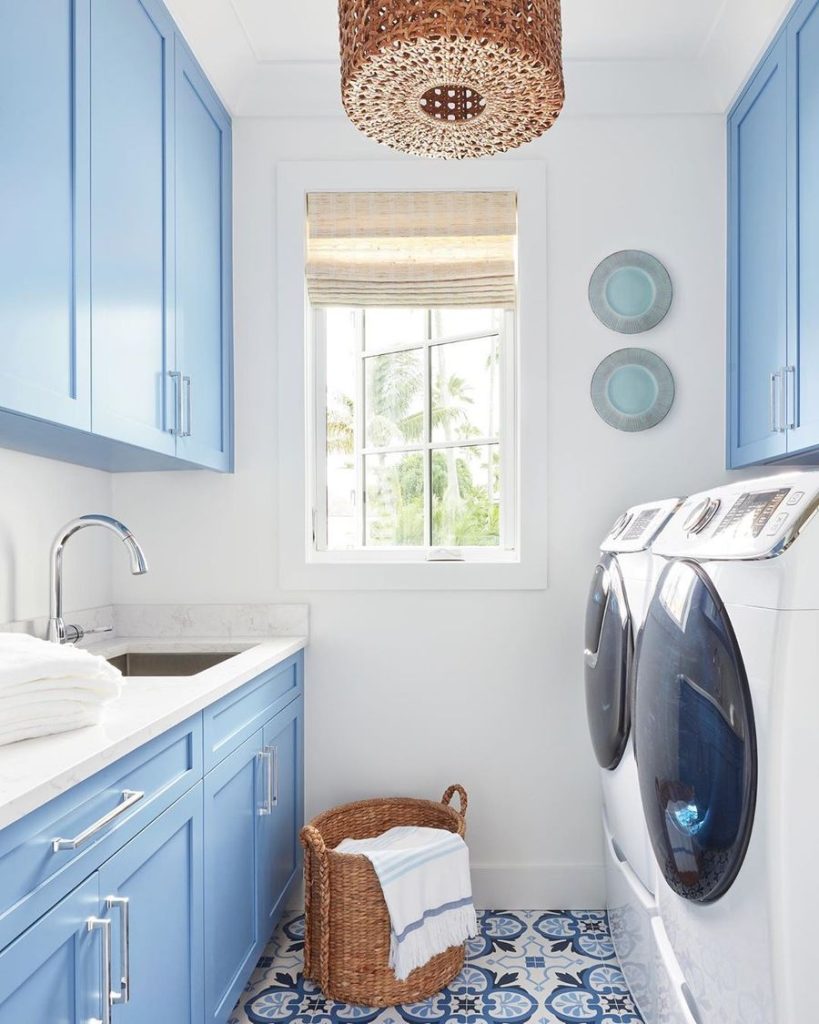Despite being relatively small, mudrooms and laundry rooms are work-horse spaces in many homes, including some Dakan Homes. So how do you design a space that’s efficient and practical, yet still pretty? Read on to uncover our top tips about laundry room and mudroom design.
Planning the Perfect Mudroom
Usually located beside the back, side or garage door, mudrooms provide a transition from outside to inside. Since it may be the first area someone sees when they walk into your house, it should make a good first impression. And, it also needs to be functional and trap dirt and clutter before it gets to the rest of your home.
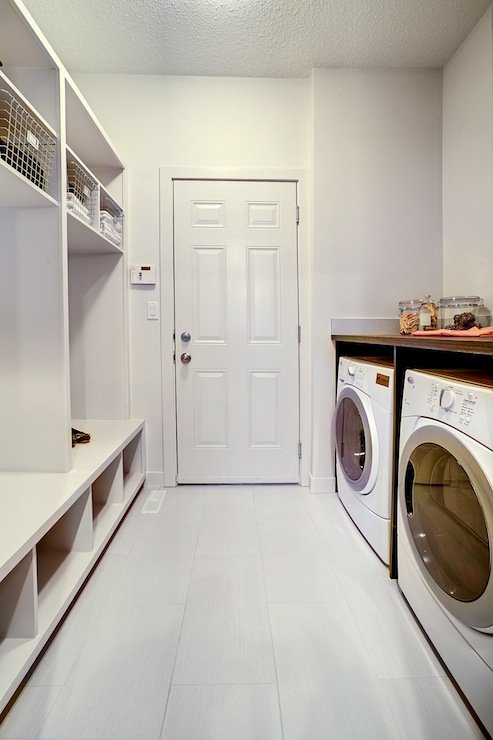
According to Houzz users, the must-have list for mudrooms includes:
- Separate cubbies or lockers for everyone in the family
- Dedicated areas for outerwear, bags, and shoes
- Durable, resilient, and easy-to-clean flooring like tile or luxury vinyl
- A place to sit and put on or take off shoes
- Hooks to store book bags, umbrellas, and keys
- A secure drop zone for mail and packages
- Supplies to clean off sandy or muddy shoes and feet
- Storage for pet supplies
- High shelves for storing seasonal items, like beach towels, gardening supplies, and hats, gloves, and scarves
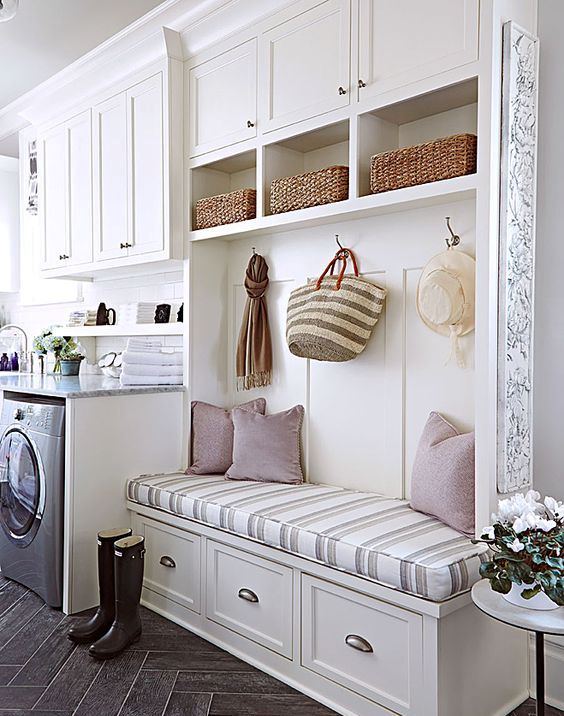
If you don’t have space for a dedicated mudroom, a small nook by the back door or a seldom-used hallway can work, too. Some compact mudroom design ideas from the experts include:
- Pairing custom millwork, bright throw pillows, and a charming wallpaper to add personality
- Using an outdoor area rug to warm up cool flooring and trap water and dirt
- Incorporating vintage pieces, like a simple bench or large cabinet
- If your mudroom flows into the rest of the home, you have two choices: keep colors and patterns understated so it doesn’t clash with the rest of the house, or make your mudroom stand out with bold cabinet colors, whimsical tile or wallpaper, or fun accent colors.
- Turning an oversized cabinet into a mini mudroom. Add shelves for shoes, hooks for coats/backpacks, and baskets to hold gloves, scarves, and hats.
- Adding an upholstered cushion in the same fabric as your couch or throw pillows to tie two areas together
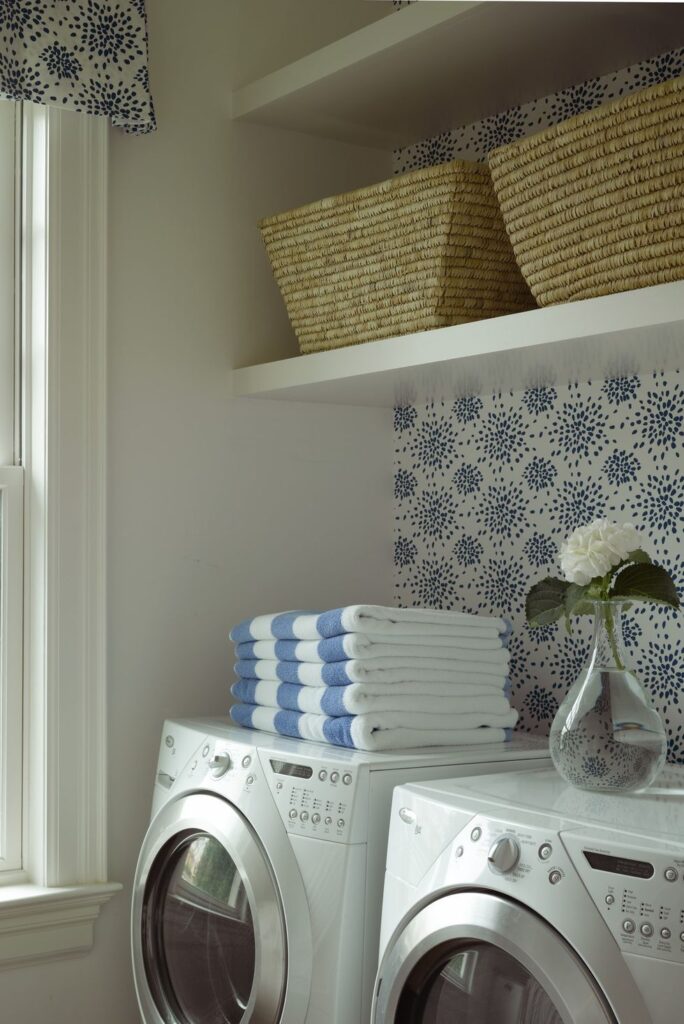
Tackling Laundry in Style
Twenty years ago, laundry rooms were utilitarian spaces without a lot of style. Now, if you’ve got the space, laundry rooms can house extra storage for cleaning supplies, countertops for folding laundry, a chore sink, a dog-washing station, and of course, your washer and dryer.
For Houzz users and home design experts, the ideal laundry room is on the same floor as the bedrooms and includes:
- A laundry chute for convenience
- An extra washer (preferably one that conserves energy) so you can wash more in less time
- A hanging rod to air-dry clothes
- A built-in ironing board to make de-wrinkling garments easier
- A deep utility sink for soaking stained items, handwashing delicates, or rinsing off sandy items before laundering
- Hooks to hang cleaning supplies
- A TV for true escapism
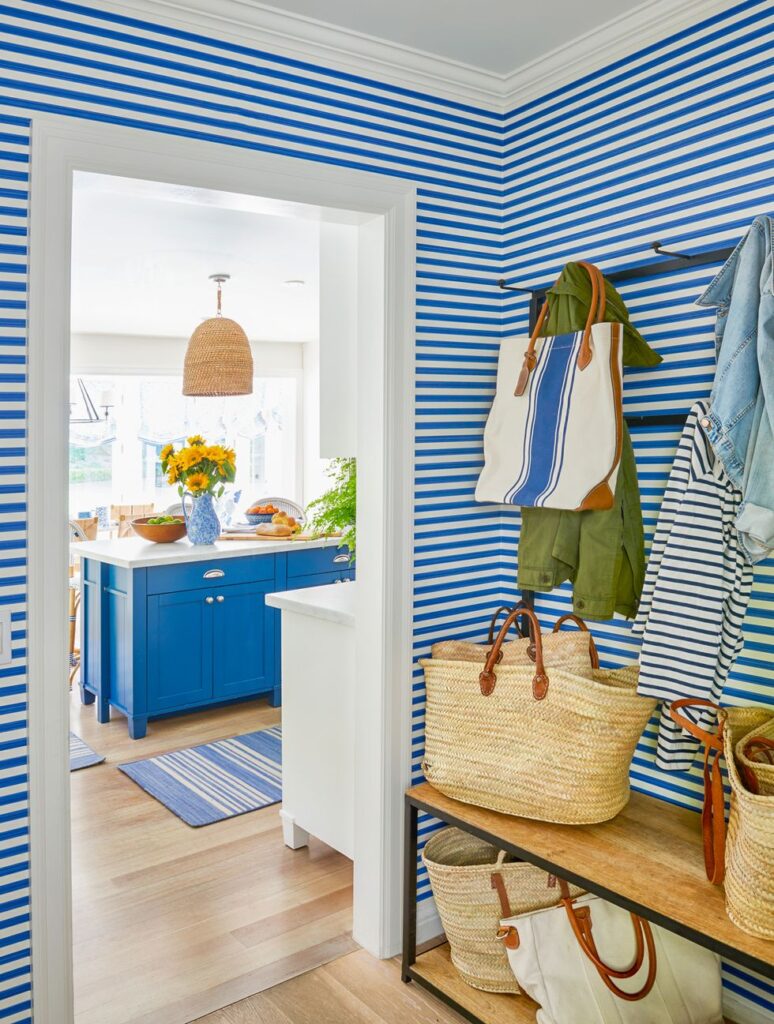
For many, the “room” in laundry room isn’t accurate. Often, laundry areas in beach houses are found in closets, niches off hallways, or other tucked-away spaces. No matter where you put your laundry area, smart laundry and mudroom design choices will maximize its function. Some design ideas from the experts include:
- Vertically stacking the washer and dryer to maximize space
- Choosing front-loading appliances and adding a counter over the machines to sort and fold clean laundry
- Pairing a warm wood counter with wood upper cabinets to provide a warm counterpoint to white walls, a white tile backsplash and white lower cabinets
- Installing casement windows to bathe the room in natural light. Make sure your laundry area has ample artificial light as well so you can see clothing stains and read garment tags.
- Using a fabric skirt or a curtain to camouflage your washer and dryer
- Using whimsical wallpaper, a pretty backsplash, framed artwork, colorful trim, a painted ceiling, or bold flooring tile to reflect your personality and make a mundane chore more joyous
- Incorporating the same cabinetry, hardware, and fixtures in the laundry area that you have in your kitchen to create a cohesive look
- Using fluted or frosted glass doors to bring light into a small laundry room
- Converting an underused powder room into a laundry room if you don’t have spare space to build one.
- Using pocket doors to separate a laundry room or closet from other areas without taking up extra space
- Elevating your machines with a built-in platform to give your back a break
- Experimenting with new paint colors as a test run before committing to a new shade in a larger, more guest-prone space
- Using open shelving to make a small space feel bigger
- Painting cabinets a pretty color to draw attention away from less-than-appealing machines.
- Installing barn doors to hide your laundry area from other rooms—and add visual interest
- Choosing a farmhouse sink instead of a traditional utility sink for added style
In an ideal scenario, you could pair your laundry area with your mudroom so wet beach towels and bathing suits go straight into the wash while cabinets and storage baskets can corral beach bags, badges, coverups, flip flops, and sunscreen.
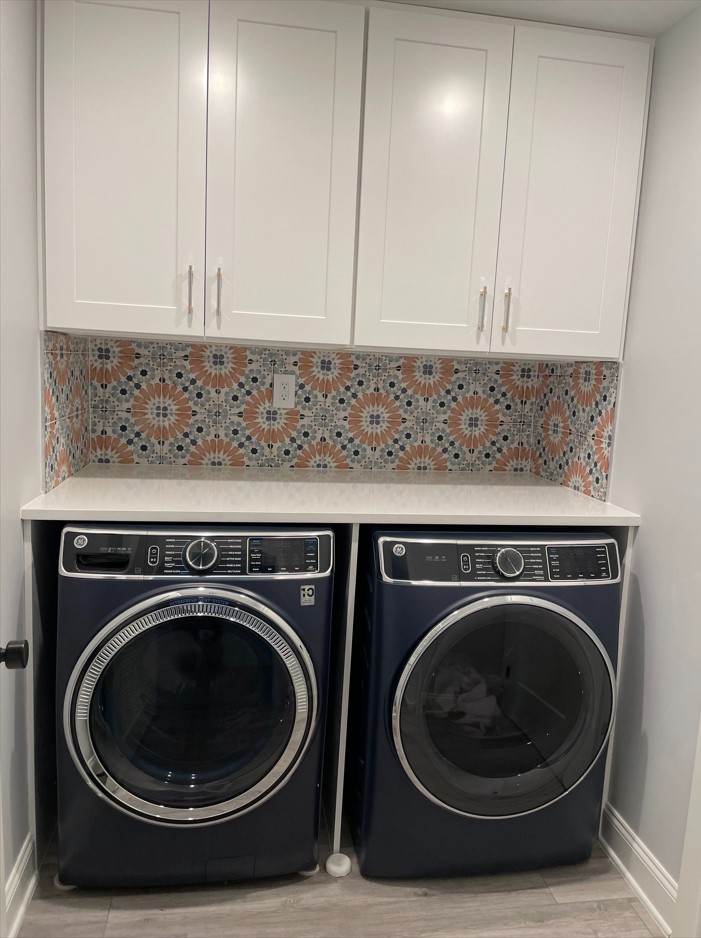
Sources:
https://www.housebeautiful.com/room-decorating/entryway-ideas/g24188262/mudroom-ideas-designs/
